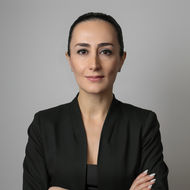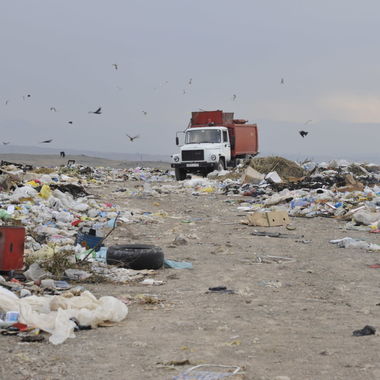
“The mesh bag is for fruits and vegetables, the red one is for bread, black is for meat and green is for dairy,” my grandmother instructed my sister and I before sending us off to get some groceries two blocks down the road – a routine that played out a couple times each week throughout my childhood. There was a corner shop that sold fresh dairy and meat products at the intersection of Baghramyan and Moskovyan avenues. My grandmother would not entrust us with the serious business of selecting meat cuts or bargaining with fruit and vegetable vendors, but she did task us with taking back empty and thoroughly washed glass bottles in exchange for new ones filled with fresh matsun (Armenian yogurt), sealed with thin foil lids.
We did have plastic bags back then, but these were no ordinary single-use plastic bags; they were special. We used plastic bags to carry our notebooks and school supplies as many families couldn’t afford backpacks, we brought gifts on special occasions in plastic bags and we stored our most treasured family heirlooms in plastic bags for safekeeping. By the late 1990s, with economic transition and development, the influx of plastic bags flooded the market. Plastic was no longer rare or special; it was everywhere. For the generation raised in the Soviet Union, the abundant presence of plastic bags in post-Soviet Armenian supermarkets and shops was a way of disassociating from the past, a dark legacy of product scarcity and absence of diversity. In a way, walking out of a supermarket with multiple plastic bags in the late 1990s and early 2000s was a sign of lavishness and prestige. Feeding into this new plastic addiction, supermarkets began to even generously double-bag some items, toiletries for example.
In less than two decades, plastic pollution in general and plastic bag pollution in particular became not only an environmental menace but also a socio-psychological one. Plastic bags are clogging up the country’s landscape, polluting not only roadsides near cities but also remote areas, as strong winds spread the lightweight plastic deep into forests and mountains. Over time, the ubiquitous presence of this pollution all around us has become the norm and not the exception. This is when we are faced not only with environmental challenges of pollution but also with socio-psychological ones.
In the summer of 2018, Armenia’s Ministry of Environment announced a gradual phase-out of single-use plastics, with plastic bags as the first target. After months of research and consultations with stakeholders (including producers of plastic bags, supermarkets, civil society sector, restaurateurs and state agencies), the government of Armenia set the effective date for a ban on plastic bags to January 1, 2022. The policy includes important provisions, such as waiving plastic bags that are thicker than 50 microns (that are strong enough to be reused), waiving bags produced from recycled polymers (usually trash bags, marked as recycled) and waiving very thin polyethylene bags that are used for weighing and wrapping meat, dairy and other food products that have food safety requirements.
It is projected that the ban will reduce plastic waste by nearly 4000 tons annually.
In the meantime, the Ministry of Environment launched a public communications campaign and started engaging opinion-makers in the country and the diaspora to help in the transition to this more environmentally-conscious consumer behavior.
The Armenian Government’s Five Year Plan includes a strategy for greening economy and incorporating circular economy principles. As a circular economy envisages reduction of the volume of generated waste, one of the next targets in the strategy is the creation of favorable legal and economic conditions for the private sector to step in with a comprehensive plastic/glass/aluminum bottle return and recycling system. The Ministry of Environment is also working on developing a list of other single-use plastic items, selected based on an analysis of the most-polluted sites in the country. Once the list is finalized, these items will also be phased out.
Now my own son is 10 years old. I send him for simple grocery tasks. We have accumulated about 30 different reusable bags, which I’ve collected over time. They are not marked with which food items they are for, like my grandmother used to do, but my son knows that he can’t go grocery shopping without taking a couple of them.
also read
Why Haven’t You Registered? Armenia’s Problem of Illegal Garbage Dumps
By Gevorg Mnatsakanyan
An abundance of illegal garbage dumps and legislation that is sometimes unclear about the responsibilities of different governmental bodies with regards to waste management, it’s a wonder Armenia hasn’t drowned in a sea of trash.
Where Does Armenia’s Medical Waste Go?
By Lusine Sargsyan
What is medical waste and how should it be treated? Because of the cost involved in proper treatment, it is possible that potentially biohazardous waste is ending up in municipal dumps.







EVN Report welcomes comments that contribute to a healthy discussion and spur an informed debate. All comments will be moderated, thereby any post that includes hate speech, profanity or personal attacks will not be published.